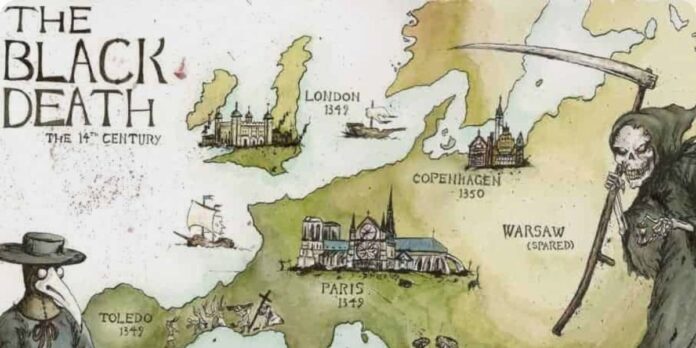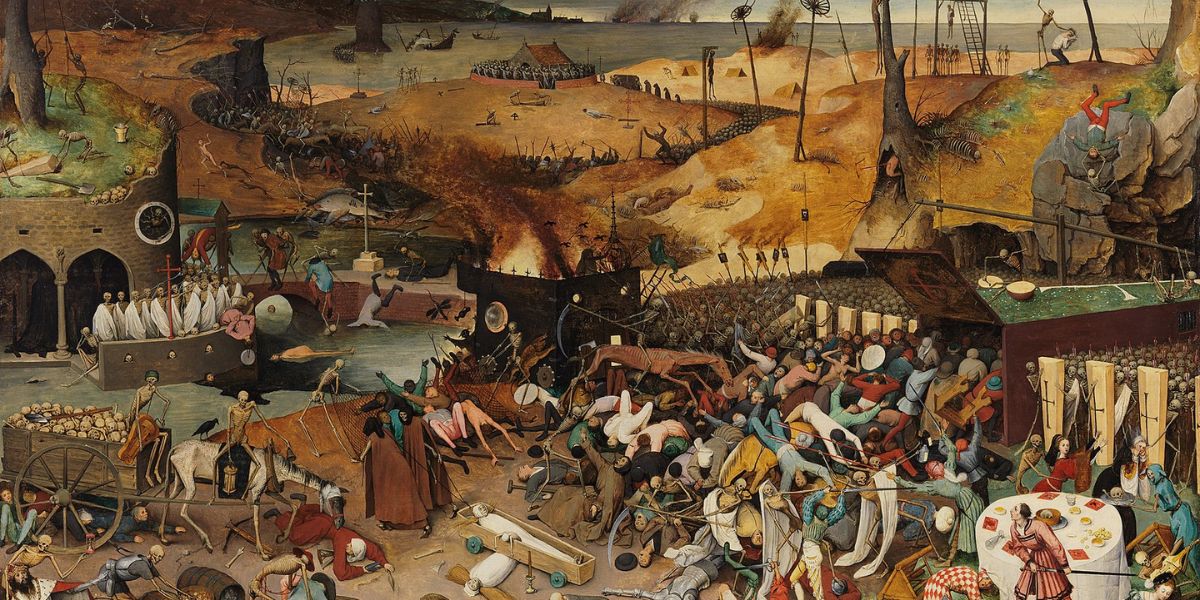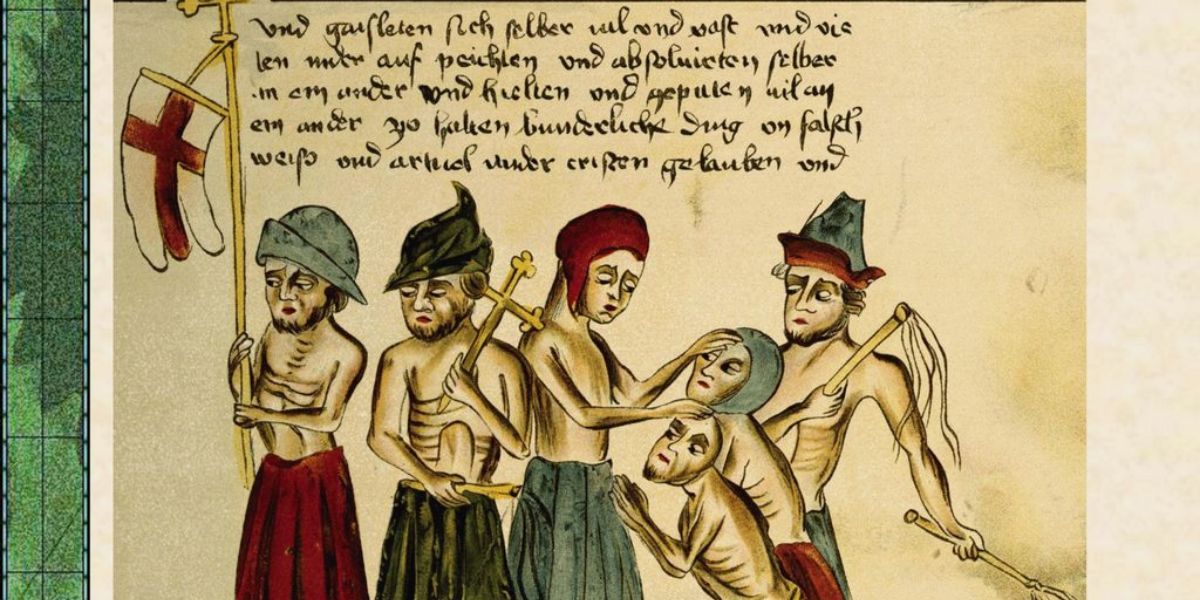The Black Death, one of the most devastating pandemics in human history, swept through Medieval Europe between 1347 and 1351. This catastrophic event is remembered for its profound social, economic, and cultural impacts, leading to a massive loss of life and permanently altering the course of European history. The Black Death: How the Plague Devastated Medieval Europe is a chilling reminder of the fragility of human civilization in the face of uncontrollable natural forces.
The Origins of the Black Death
The Black Death is believed to have originated in Central Asia, possibly in the Mongolian steppes. From there, it spread westward along trade routes, primarily through the Silk Road and maritime ports. By 1347, the plague had reached Europe via trading ships docking in Sicily and Venice. The disease, caused by the Yersinia pestis bacterium, was transmitted to humans through the bites of infected fleas carried by rats.
- The spread of the plague followed trade routes.
- Yersinia pestis was the primary cause of the pandemic.
- Fleas and rats were key vectors in transmitting the disease.
The Symptoms and Rapid Spread
Once the Black Death took hold in Europe, its spread was swift and deadly. The disease manifested in different forms: bubonic, pneumonic, and septicemic. Each form had its own distinct symptoms, but the bubonic plague was the most common. Victims experienced swollen lymph nodes (or buboes), fever, chills, and blackened skin due to gangrene.
- Bubonic plague caused painful swelling known as buboes.
- The pneumonic form affected the lungs, making it highly contagious.
- Septicemic plague resulted in blood infections and was almost always fatal.
The speed with which the Black Death spread was staggering. Infected individuals could die within days of showing symptoms, and the lack of medical knowledge made containment nearly impossible. Whole towns were depopulated, and bodies were often left to rot in the streets as survivors fled or died themselves.
Impact on Population and Society
The Black Death killed an estimated 25 to 30 million people in Europe, roughly one-third of the continent’s population at the time. Some cities, such as Florence, lost as much as 60% of their population. The high death toll led to severe labor shortages, a collapse of local economies, and social upheaval.
- An estimated 30 million Europeans perished during the plague.
- Cities like lorence were hit particularly hard, losing up to 60% of their population.
- Labor shortages became a widespread problem, disrupting agriculture and trade.
As more people died, traditional social structures began to break down. Feudal lords lost control over their lands, and serfs, who were tied to the land under feudal law, began to demand better wages and working conditions. This shift in power dynamics led to revolts and social changes that paved the way for the decline of feudalism in Europe.
Economic Consequences of the Plague
The economic impact of the Black Death was profound. Medieval Europe’s economy was primarily agrarian, and the death of so many peasants and workers led to widespread disruptions in food production and trade. Fewer hands to work the land meant that agricultural output dropped, and in many regions, entire farms and villages were abandoned.
- The agrarian economy of Europe suffered due to labor shortages.
- Entire villages were abandoned as people either died or fled.
- Wages for surviving workers increased due to the scarcity of labor.
In response to these economic changes, landowners often tried to reassert their control by enforcing pre-plague wages and working conditions. However, this led to peasant revoltsacross Europe, such as the Peasants’ Revolt in England in 1381, where the lower classes demanded higher wages and better treatment.
Religious and Cultural Impact
The Black Death also had a profound impact on the religious and cultural life of Medieval Europe. Many people believed the plague was a form of divine punishment for humanity’s sins. As a result, there was a resurgence of religious fervor, with people turning to the Church for explanations and remedies. Some joined flagellant movements, where individuals would publicly whip themselves in penance, hoping to ward off divine wrath.
- The plague was seen as divine punishment by many.
- Flagellant movements gained popularity as a form of penance.
- The Church was both a source of comfort and blame during the pandemic.
However, the Church also faced criticism for its inability to stop the plague. Some clergy fled their parishes, leading to a loss of faith among the population. This led to pogroms and massacres, further fracturing the social fabric of Europe.
The Long-Term Effects on Medicine and Public Health
One of the few positive outcomes of the Black Death was its impact on medicine and public health. The pandemic highlighted the limitations of medieval medical practices, which were largely based on ancient theories of humorism. As a result, there was a growing interest in understanding the natural causes of disease and finding more effective treatments.
- Medieval medicine was based on outdated theories of humorism.
- The plague led to increased interest in scientific approaches to medicine.
- Public health measures, such as quarantines, became more common.
The idea of quarantine emerged during this period as a way to contain the spread of disease. Ships arriving at European ports from plague-affected regions were required to remain isolated for 40 days, a practice that became known as a quarantine (from the Italian word “quaranta,” meaning 40).
The Black Death and Art
The cultural impact of the Black Death can be seen in the art and literature of the time. The theme of death became prominent in artistic works, with macabre depictions of skeletons, mass graves, and the Danse Macabre (Dance of Death), a motif that symbolized the universality of death and the futility of worldly wealth and power.
- The Danse Macabre became a popular artistic theme during and after the plague.
- Art and literature increasingly focused on death and the fragility of life.
- Religious themes also dominated, reflecting the existential crisis faced by society.
These depictions served as a reminder of the fleeting nature of life and the inevitability of death, which resonated deeply with a population that had witnessed mass mortality on an unprecedented scale.
Conclusion
The Black Death: How the Plague Devastated Medieval Europe is a story of immense human tragedy and suffering. The pandemic wiped out a significant portion of the population, disrupted economies, altered social structures, and left an indelible mark on the cultural and religious landscape of Europe. While the plague’s immediate effects were devastating, its long-term impact helped shape the modern world, leading to changes in medicine, labor practices, and societal structures. The Black Death remains one of history’s most sobering lessons about the fragility of human civilization in the face of pandemics.





